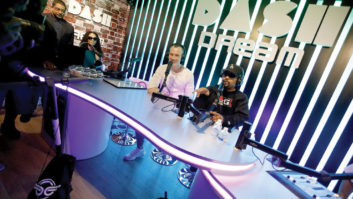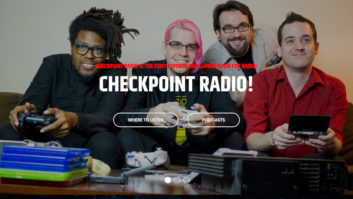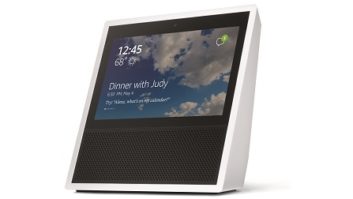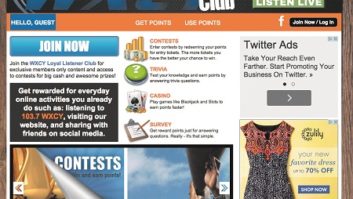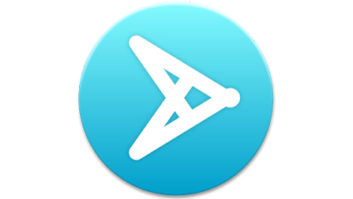Reaching Millennials
Oct 1, 2008 12:00 PM, By Matthew Terrell
There is a new generation that needs to be spoken to. Millennials (also called Generation Y or Generation M), will possibly be one of the most influential generations in terms of how communication works. Called Millennials because of the importance of the millennium in terms of their lives, this is the generation that will eventually take the place of Generation X, who set the stage for the information revolution. Though sources vary on a specific age range for this generation, The Kaiser Family Foundation says Millennials can be as young as 12 years old, or as old as 25. They come from all different economic, educational and racial backgrounds; they don’t even necessarily share the same social and political values. But what this generation does have in common is the ubiquitousness of the use of technology in their lives.
Portable media devices have allowed Millennials (and other audiences) to store and access vast amounts of audio. The radio in the car is slowly being replaced by the Ipod. Listening to NPR on a Walkman on the subway has evolved to listening to podcasts on a Zune. We are no longer constrained to listen to whatever is on at the moment; we have audio at our fingertips � it is searchable, fast-forwardable, and subject to our whims. We are not forced to sit through content we don’t like in order to hear a commentary by our favorite author. We can now skip to what we want and delete the rest.

WFNX 101.7 Boston and 92.1 New Hampshire take full advantage of Myspace (left) and Facebook (right) to reach a younger demographic.
Radio has to face such juggernauts as podcasting, Itunes, Ipods, Youtube, and Facebook when they are trying to sway an audience, and there are several organizations already doing this.
Next-generation radio

The Public Radio Exchange connects independent producers with radio stations.
Probably one of the most interesting and effective initiatives for engaging Millennials in radio is the Next Generation Radio Project at National Public Radio. This project identifies rising stars in college radio news and invites them to radio training projects across the country. These young reporters are paired with an NPR producer in the project city, who then helps them create an NPR-ready news piece. From the initial brainstorming, to interviewing, writing, editing and distributing, these producers follow their young prot�g�s along the way.
Reaching Millennials
Oct 1, 2008 12:00 PM, By Matthew Terrell

Podcasts can be listed for download through Itunes, as seen here with NPR.
What really makes this project effective is the use of new media technology. The project locations feature blogs, online radio training, and they even use the Public Radio Exchange distribution program (PRX).
Next Generation uses the social networks Facebook and PRX to connect with new producers, project alumni and new listeners. They believe Millennials will be the ones signing the donation checks to support public radio in the coming years, so they try hard to keep open contacts with as many young people as possible. Their philosophy is that in order to keep the attention of this generation it is key to speak in the same context that they do. That means staying up-to-date with the latest technologies, and figuring out how that applies to public radio.
SCADRadio.org
Every year, more and more people listen to radio on the Web. What makes Web radio such a good idea for engaging Millennials is the ease of production. Terrestrial radio is still susceptible to major amounts of bureaucracy and regulations through the government and the FCC. Millennials who work in Web radio are freer to explore, make mistakes, learn and (most importantly) stay involved in radio. Because the structure is much more flexible and open, Millennials are allowed a stronger voice in Web radio.
SCADRadio.org is a completely student-run radio station at Savannah College of Art and Design. No administrator controls the content they broadcast, and there is no approval before content airs. Though it is completely student-controlled, it is financed by the college (the station has no advertising revenue or pledge drives). The full-time adviser to the station serves as a bridge to the administration, rather than a manager/controller. While the station does follow the FCC standards for a licensed, terrestrial radio station, everything is in the hands of the Millennial-aged students who run it. This produces a snowball effect: Millennials run the station, their friends listen, then the friends join, and those friends’ friends join�and so on. By letting Millennials control the content, a credibility is created that older individuals can’t achieve when interacting with Millennials.
The Public Radio Exchange
The Public Radio Exchange is an online platform meant to connect producers of radio work (news commentary, and drama mostly) with radio stations across the country. Member producers can upload their content, define and describe it, and then license it to radio stations across the country. Producers who upload work can also choose to charge for their work, and can even make a small return on their time producing. The income that producers receive is small ($0.50-$2 per minute of content licensed); it is mostly considered to be a bonus on top of getting one’s voice heard across the country.
The Generation Project at PRX (generation.prx.org) is meant to actively engage students and Millennials in radio. This project tries to make sure that Millennial producers have the tools, training and outlets they need to get their voice heard. While it does not send equipment to individuals, it offers training and advice to students trying to learn the ins and outs of radio production. Furthermore, it recruits individuals for the Youth Editorial Board that listen to and review pieces produced by the younger generation. Those on the Youth Editorial Board also receive a small monthly stipend which is also meant to help producers who are new to the game.
Reaching Millennials
Oct 1, 2008 12:00 PM, By Matthew Terrell
A new policy
While some of the advice I’ve offered may seem like common sense to some, these aren’t widely enacted policies. The key here is that a lot of these three organizations’ policies seem like common sense to a Millennial audience. If you want your content to appeal to the younger generation, you need to do the things that seem commonplace to them.
If you are not online already, get online as soon as possible. Millennials are the most connected generation ever. They eat, sleep and breathe technology. Computers, Ipods and cell phones are intrinsic parts of the daily lives of the younger generation. A presence available in these devices is key to reaching this audience.
There are certain websites and software programs you absolutely most know and use:
Facebook: This is the social networking site geared toward upwardly mobile, educated Millennials. This is where you will find a lot of students who may one day become part of your organization.
Myspace: This is one of most visited websites in the world (clocking in regularly in the top five in amount of hits). While this may not necessarily get young people who will produce radio, this is a great site to increase presence and find new listeners.
The Public Radio Exchange: This is the most important site to learn for distributing content. Not only will you be able to sell your content to member stations (a great way to license work produced by younger reporters), but this is a great place to find and recruit new talent. Member stations can cut down costs of production for local producers, and they get to feature more voices on the airwaves. While this may not be good news for the local, full-time producer, it is great news for young reporters all over the country.
Itunes: This software available free from Apple is the most prolific publishing source for music, news and podcasts. While there is a lot of content to compete with through Itunes, this is an important tool because so many internet users get their music from Itunes. This is the best and easiest way to get your content downloaded onto Ipods and heard across the country.
Use these tools like Millennials use them: It’s not enough to you know how to surf Myspace and have a Facebook profile. You cannot have a boring, professional profile on Facebook and expect to attract a younger audience. Millennials respect these new tools, and they are investing their time and energy in using them with the belief that it will pay off with a deeper, more nuanced social network. If you want to use new media tools and social networks, you have to respect them as the tools for social change and interaction like their Millennial creators view them. It’s a very common theme in new media research that users (especially Millennials) can sense a fakeness and distrust people who don’t use these tools in the right ways. The right way involves using the tools primarily for social uses rather than professional, and keeping a personal tone to created profiles and sites.
Go niche. Satellite radio, podcasting and new media technology have allowed us to systematically categorize and sort through the information we find appealing. Have a niche understanding of what you do. (Are you youth-produced radio from Vermont? Are you African American news by high school students?). People want the potential to hear new things, and it is easier to find it when the niche is defined. The markets currently losing listeners (especially the younger ones) are the stations that think everyone wants to hear the same thing. When Millennials discover the power of niche media, it will be hard to return to corporate controlled media.
Reaching Millennials
Oct 1, 2008 12:00 PM, By Matthew Terrell

Avoiding bureaucracy, SCADRadio.org is a completely student-run radio station at Savannah College of Art and Design.
Don’t be afraid to innovate too soon: Part of the charm and the challenge of appealing to Millennials through new media technology is the constant search for what is going to be the next big thing on the Internet. Five years ago, Internet radio was scoffed at, but today stations like SCADRadio.org have become something to emulate. Don’t let your organization or any other factors hold you back from participating in the new tools that come along. The Millennial generation has shown no sign of slowing their acceptance of new technology, so organizations that want to appeal to them have to keep up their technological presence.
Empower Millennials: Probably one of the most common themes in Millennial research is the generation’s need to find purpose. Part of this is feeling important or being needed in an organization. A combination of teamwork and individual accountability gives them a sense that the work they are doing matters, and they should continue doing it. This is a generation that does not respond well to micromanagement and wants to be able to learn from its own mistakes. Over-supervision of Millennials will lead to disdain and distrust, and will create a bad name for yourself or your organization among the generation. The most successful Millennial-based organizations (such as SCADRadio.org and Generation PRX) are almost completely controlled by this generation, and they are doing well in this system.
The overwhelming nature of keeping up with Millennials may seem like a drawback � the endless amount of websites, software programs and technologies may never all be kept up with. What is important is to stay up to date with the specific technologies that Millennials value. If you can keep up with Facebook, Youtube, and PRX, then you will be able to gain a higher respect among Millennial audiences. And gaining a respect among this audience is key to your organization thriving, because they are the people who will be signing the checks in the future.
Terrell is a freelance writer currently based in Prague.






